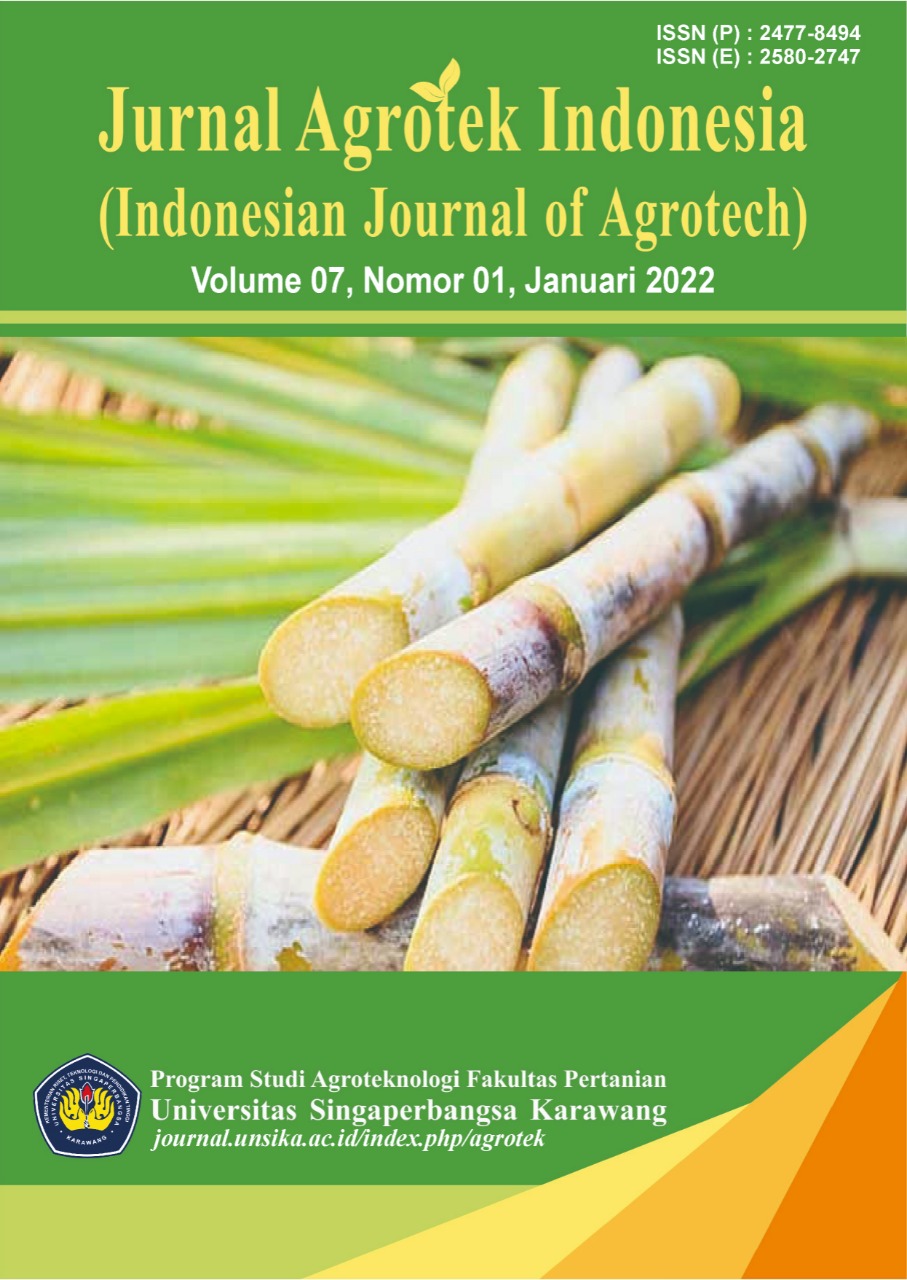Classification Susceptibility Fl
Abstract
The red flour beetle, Tribolium castaneum Herbst (Coleoptera: Tenebrionidae), is a secondary and major pest in flour processing and storage areas. T. castaneum has a wide host range such as flours made from other foods, including corn, rice, wheat, sorghum, and biscuits. The level of susceptibility of type flour corn and rice to T. castaneum infestation depends on varieties. The objective of this study was to evaluate the classification susceptibility of flour rice and corn to infestation T. castaneum during storage. The research was carried out in a form of an experimental laboratory that used a Completely Randomized Design (CRD) with treatments type flour corn and rice, each treatment was repeated four times. The data obtained were analyzed using the Analysis of Variance (ANOVA), the results data were significantly different (P <0.05) followed by the Duncan test. Measurement strength relationship between index susceptibility with the number of F1 and median development time was determined by correlation analysis. The results showed that classification susceptibility flour rice was moderate to susceptible, while flour corn was classified as moderate to susceptible and susceptible to very susceptible. The susceptibility of two types flour was determined by the number of F1 and median development time of T. castaneum. Information classification susceptibility flour rice and corn against T. castaneum can help detect damage and lose weight of flour during storage.
Downloads
Downloads
Published
How to Cite
Issue
Section
License

This work is licensed under a Creative Commons Attribution-ShareAlike 4.0 International License.









